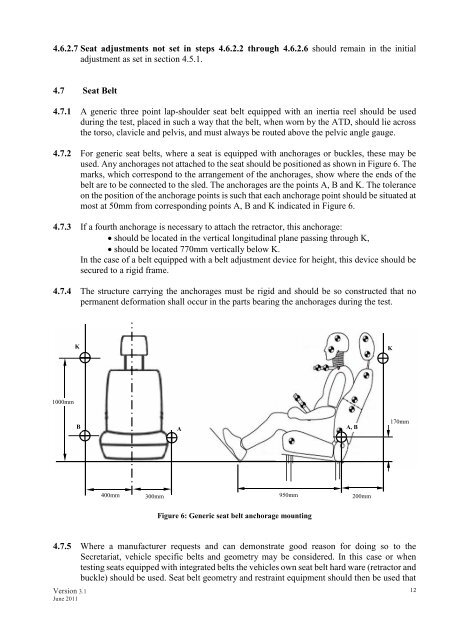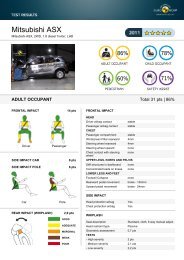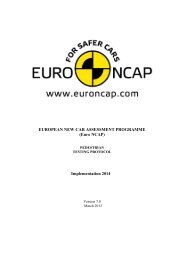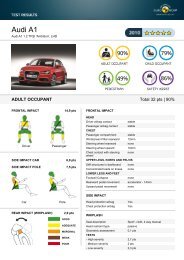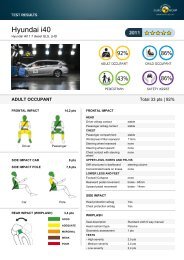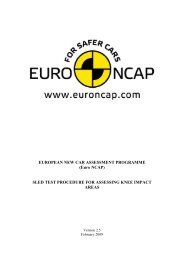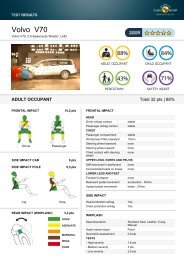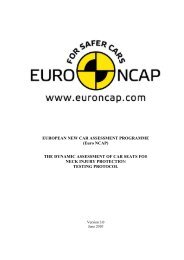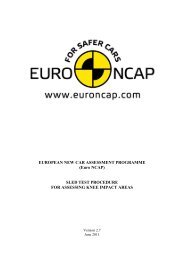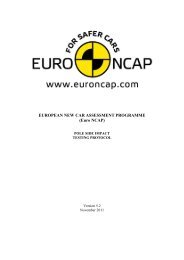Whiplash Testing Protocol - Euro NCAP
Whiplash Testing Protocol - Euro NCAP
Whiplash Testing Protocol - Euro NCAP
You also want an ePaper? Increase the reach of your titles
YUMPU automatically turns print PDFs into web optimized ePapers that Google loves.
4.6.2.7 Seat adjustments not set in steps 4.6.2.2 through 4.6.2.6 should remain in the initial<br />
adjustment as set in section 4.5.1.<br />
4.7 Seat Belt<br />
4.7.1 A generic three point lap-shoulder seat belt equipped with an inertia reel should be used<br />
during the test, placed in such a way that the belt, when worn by the ATD, should lie across<br />
the torso, clavicle and pelvis, and must always be routed above the pelvic angle gauge.<br />
4.7.2 For generic seat belts, where a seat is equipped with anchorages or buckles, these may be<br />
used. Any anchorages not attached to the seat should be positioned as shown in Figure 6. The<br />
marks, which correspond to the arrangement of the anchorages, show where the ends of the<br />
belt are to be connected to the sled. The anchorages are the points A, B and K. The tolerance<br />
on the position of the anchorage points is such that each anchorage point should be situated at<br />
most at 50mm from corresponding points A, B and K indicated in Figure 6.<br />
4.7.3 If a fourth anchorage is necessary to attach the retractor, this anchorage:<br />
should be located in the vertical longitudinal plane passing through K,<br />
should be located 770mm vertically below K.<br />
In the case of a belt equipped with a belt adjustment device for height, this device should be<br />
secured to a rigid frame.<br />
4.7.4 The structure carrying the anchorages must be rigid and should be so constructed that no<br />
permanent deformation shall occur in the parts bearing the anchorages during the test.<br />
1000mm<br />
Version 3.1<br />
June 2011<br />
K K<br />
B A, B<br />
A<br />
400mm 300mm 950mm 200mm<br />
Figure 6: Generic seat belt anchorage mounting<br />
170mm<br />
4.7.5 Where a manufacturer requests and can demonstrate good reason for doing so to the<br />
Secretariat, vehicle specific belts and geometry may be considered. In this case or when<br />
testing seats equipped with integrated belts the vehicles own seat belt hard ware (retractor and<br />
buckle) should be used. Seat belt geometry and restraint equipment should then be used that<br />
12


